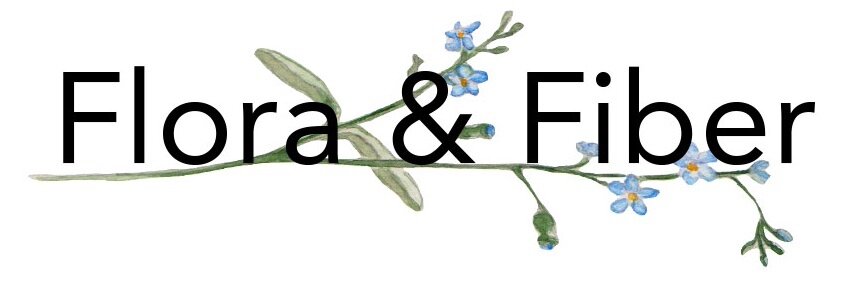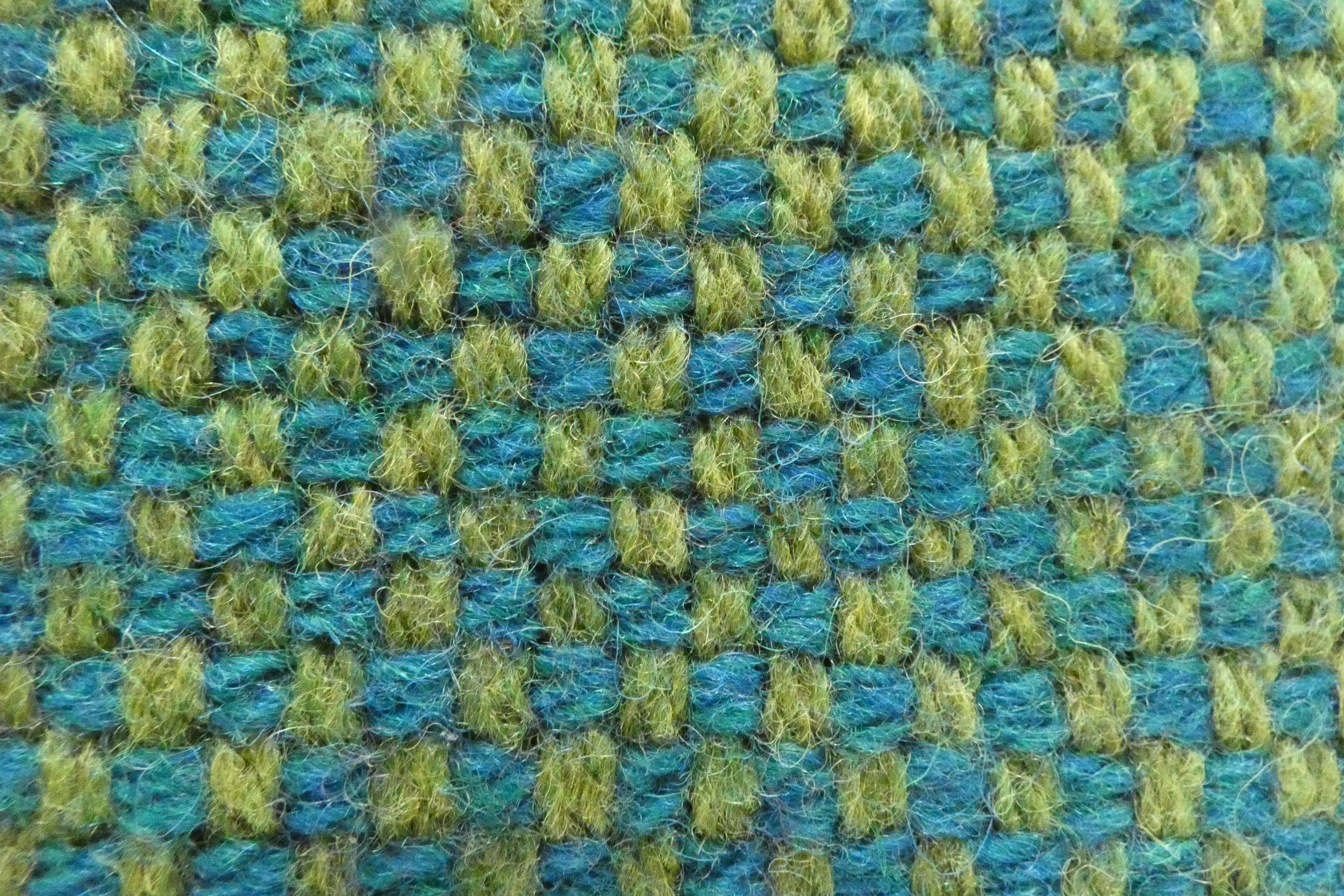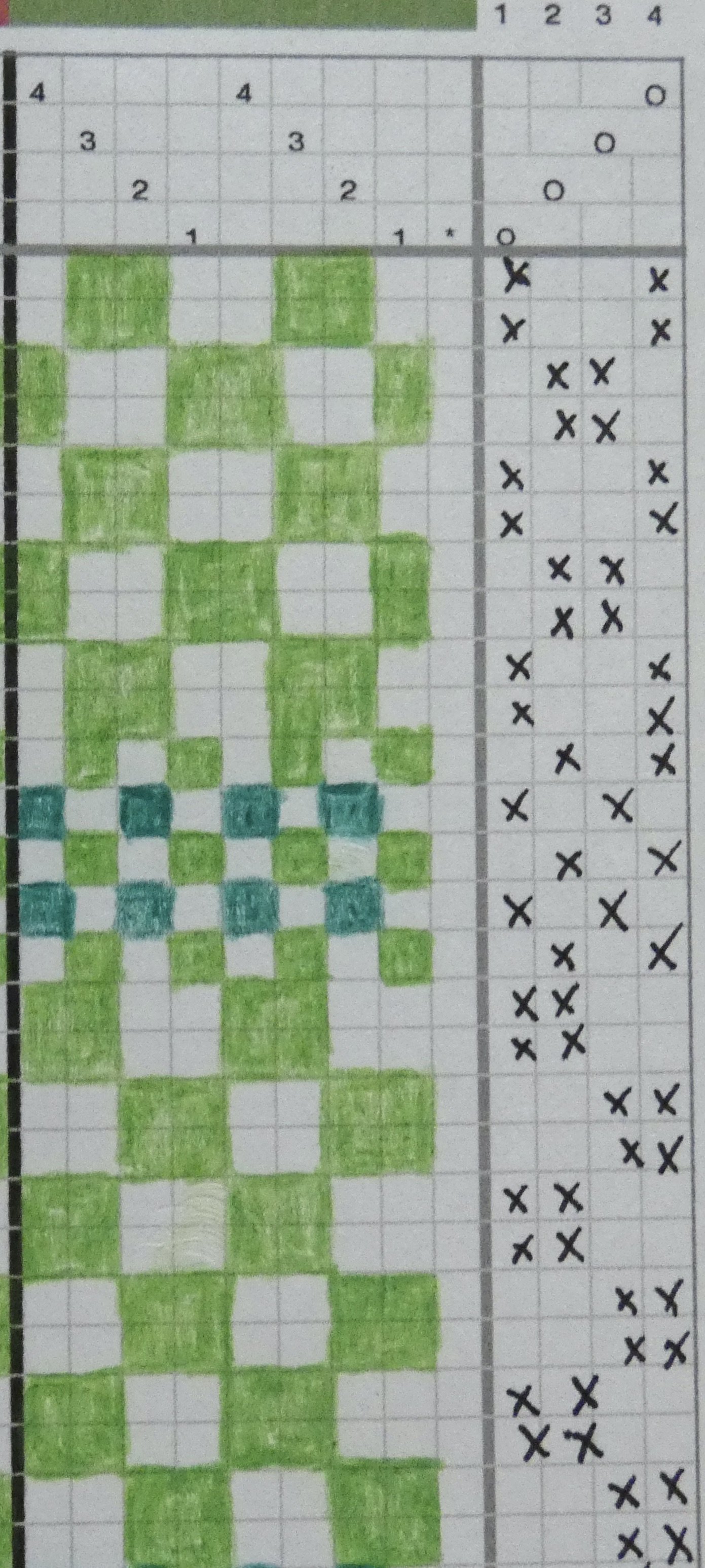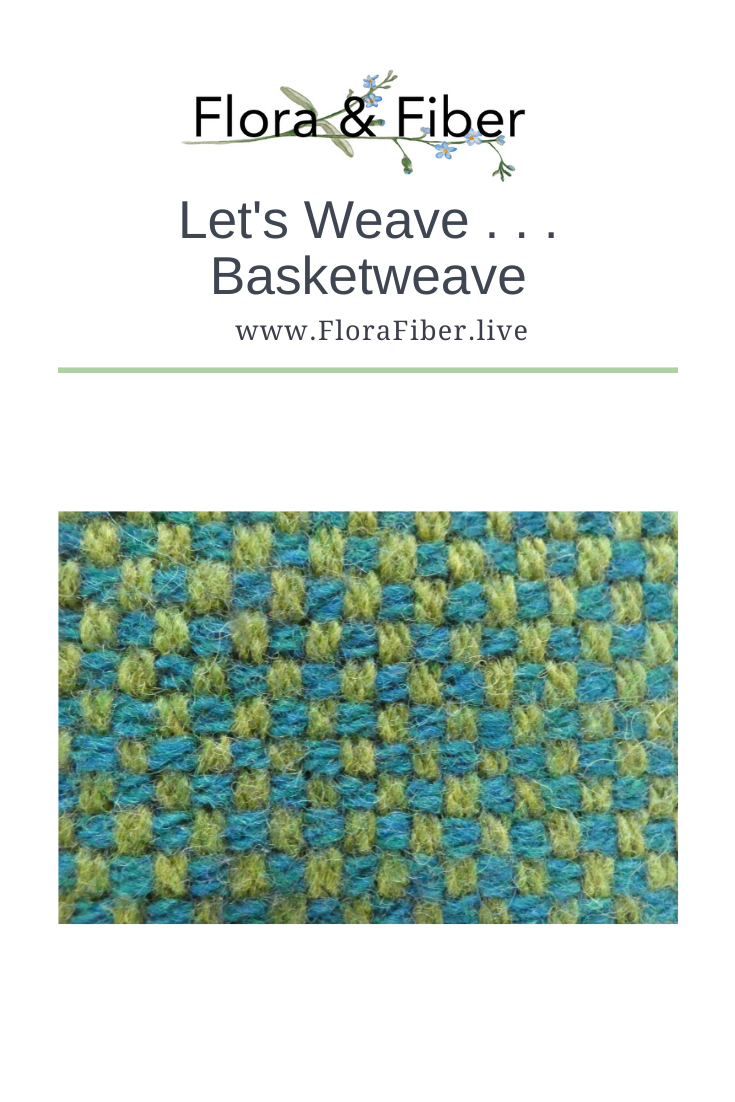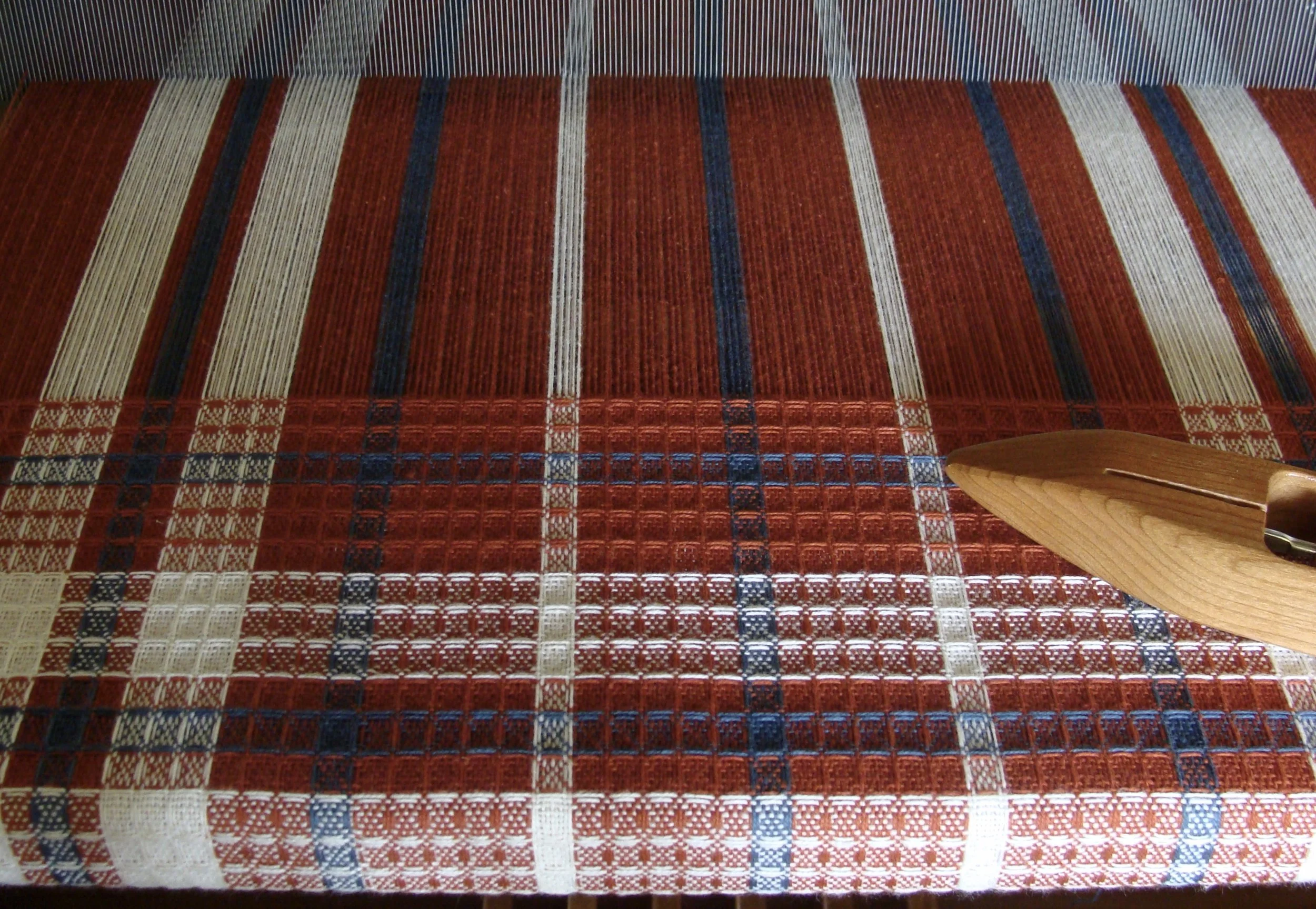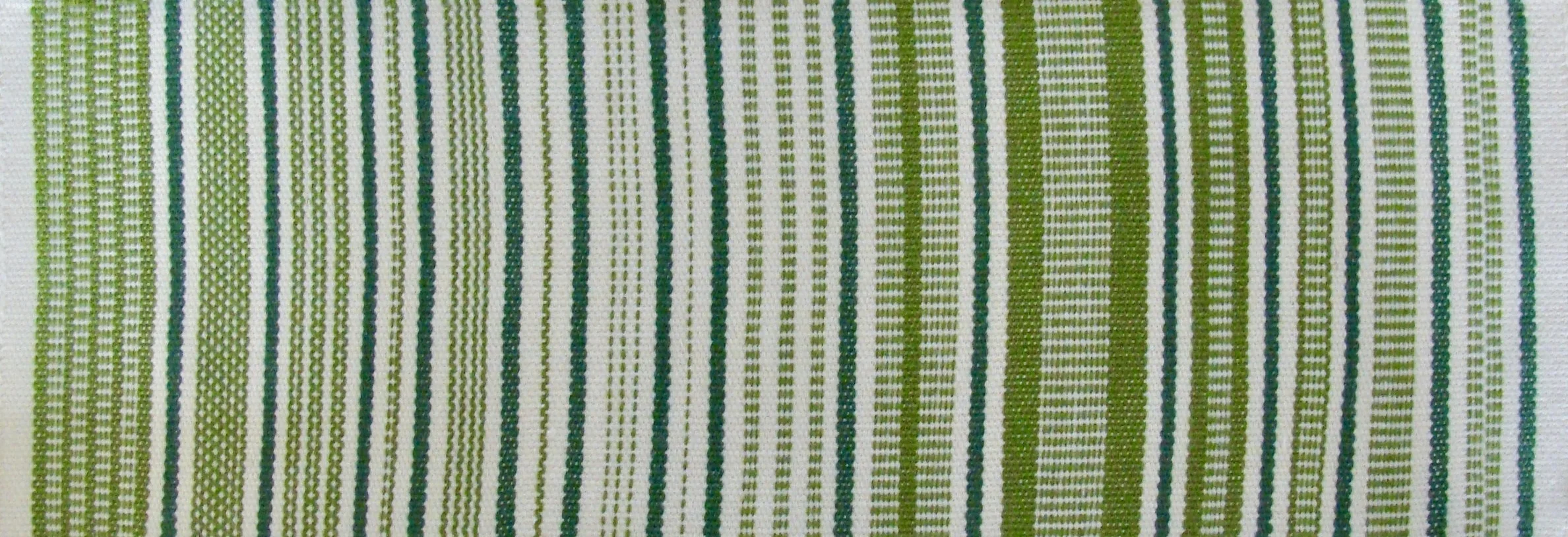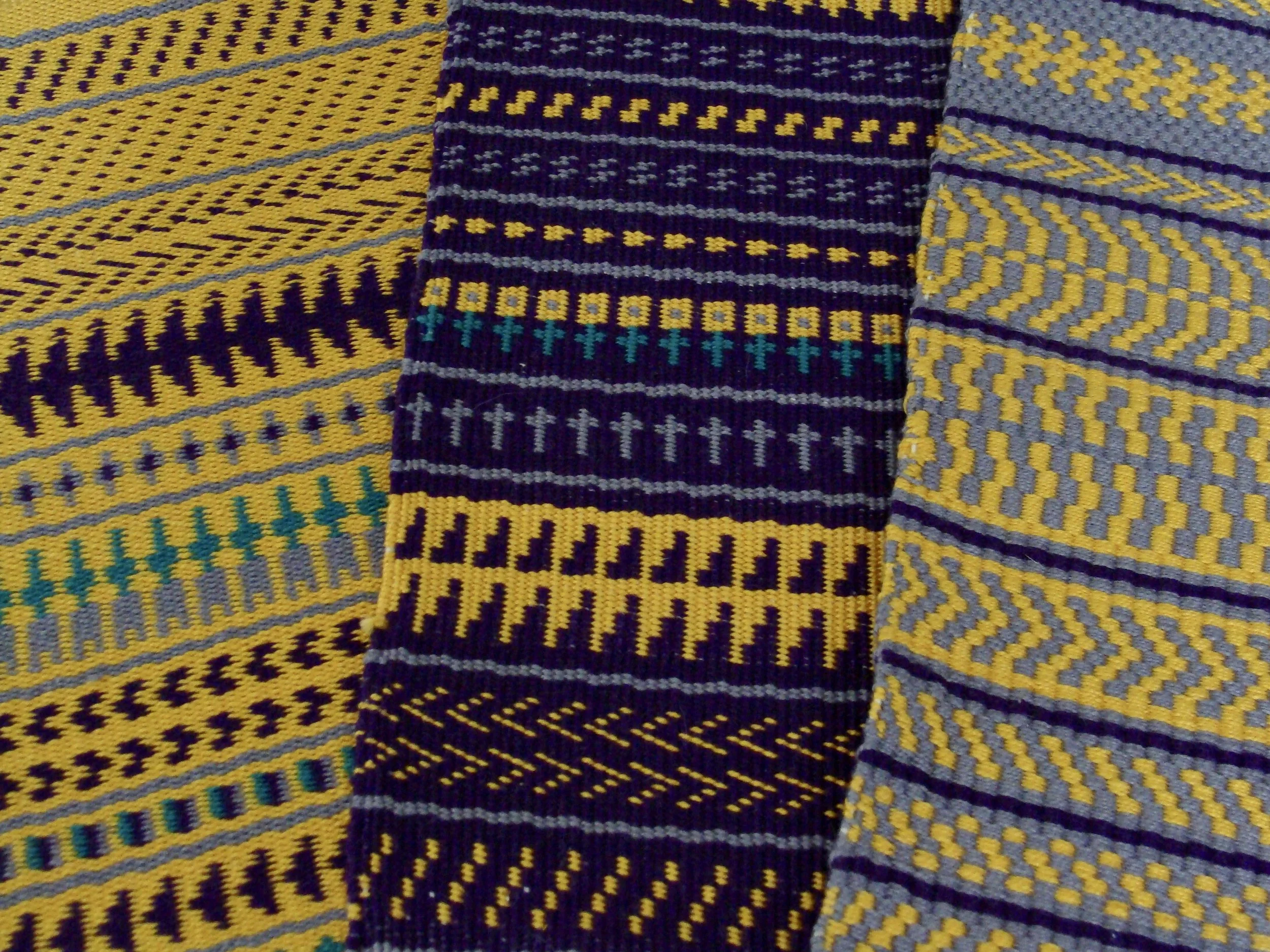Let's Weave . . . Basketweave
It’s been a while since I’ve done a ‘Let’s Weave . . .’ post where I take a look at a particular weave structure. Today’s exploration is basketweave.
Plain weave
To set the stage for our look at basketweave, I’ll first give a brief refresher on plain weave. Plain weave is a fundamental weave structure in which the weft travels over and then under adjacent warp ends. In the next row, the weft does the opposite, traveling under/over a warp end it previously went over/under. So, every weft thread interlaces each warp thread. Plain weave creates a smooth, stable, and strong cloth but possesses less elasticity than fabrics woven with other weaves.
Plain weave Derivatives or Secondary Weaves
A secondary or derivative weave is where a basic weave, in this case, plain weave, varies in some way. Basketweave is a plain weave derivative in which two or more warp or two or more weft yarns are woven side by side as a single thread. In other words, a kind of double plain weave. This modification of plain weave creates a checkerboard effect reminiscent of a woven basket.
Basket Weave
Basketweave is also known as Hopsack or Matt weave.
Warp ends are typically threaded in two side-by-side heddles to prevent twisting around each other when weaving. However, in Swedish rep weave, two ends are often threaded together in one heddle to give a tighter sett. The tie-up or treadling pairs the threads, for example, 1-2 and 3-4.
Basketweave is woven “on opposites” in pairs. Two or more weft yarns are placed in the same shed. Typically, a floating selvage is needed if using one shuttle. An alternative method employs two shuttles, a shuttle with two bobbins, or winding the two wefts together.
Even though basketweave is a plain weave derivative, it has floats of at least two threads; therefore, the sett should be closer than for plain weave. Also, the take-up of plain weave is different from basket weave. Therefore, when designing a project that incorporates both plain weave and basketweave, the selvages may flare out in the plain weave sections and draw in on the basketweave. A similar effect occurs when combining plain weave and twills.
Tip - to weave a “plain weave” selvage as the hem of a twill towel; consider using basket weave instead to prevent that hem from flaring.
Basketweave fabric has more drape because there are fewer thread interlacements than in plain weave. Historically, basketweave was used in men’s oxford shirts. The advantage of basketweave was reduced wrinkling. With the advent of polyester, this ceased to be crucial in commercially produced textiles. However, it may be a consideration for handwoven cotton clothing fabrics.
Regular Basket Weave
Regular or Common Basket Weave has the same number for warp ends and weft picks. It produces a balanced weave with equal warp and weft floats. The size of the squares depends on the number of threads worked together. Four threads (two in the weft and two in the warp) are called a 4-leaf basket. Six threads (three in the weft and three in the warp) are called a 6-leaf basket. And so forth. Keep in mind the number of repeats in a sequence drives the stability of the fabric. Too many repeats/floats and the cloth can be flimsy and snag easily.
Fancy Basket Weave
Fancy basket weave combines different size blocks/repeats in the same fabric. For example, a 2-thread basket weave and a 3-thread basket weave.
BASKETWEAVE DRAFT - TWO WEFT OVER TWO WARP and THREE WEFT OVER TWO WARP
BASKETWEAVE - TWO RED WEFT THREADS OVER TWO GREEN WARP THREADS THEN UNDER TWO GREEN WARP THREADS and on the left TWO RED WEFT THREADS OVER THREE GREEN WARP THREADS THEN UNDER THREE GREEN WARP THREADS
This draft and weaving shows basketweave (woven on the opposite sheds of 1,4 and 2,3) with plain weave in between (over 1, under 1), and the basketweave (woven on the opposite sheds of 1,2 and 3,4).
Resources
Chandler, D. (1995). Learning to weave (Revised ed.). Interweave Press. Lesson 6 Plain-Weave Variations (pp. 119-128).
Davison, M. P. (2014). A handweaver’s pattern book (Reprint ed.). Churchill & Dunn, Ltd. Chapter V-Basket Weaves (pp. 37-41).
Moody, B (2017). Basket weave selvedges for 8 shaft looms. Banner Mountain Textiles.
Oelsner, G. H. (1915). A handbook of weaves. The Macmillan Company. Basket Weaves (pp. 43–45)
Petrini, M. (2018). The Pictionary PDFs. Basketweave.
Sayed, M. A. (2014). Basket weave. Textile Apex.


